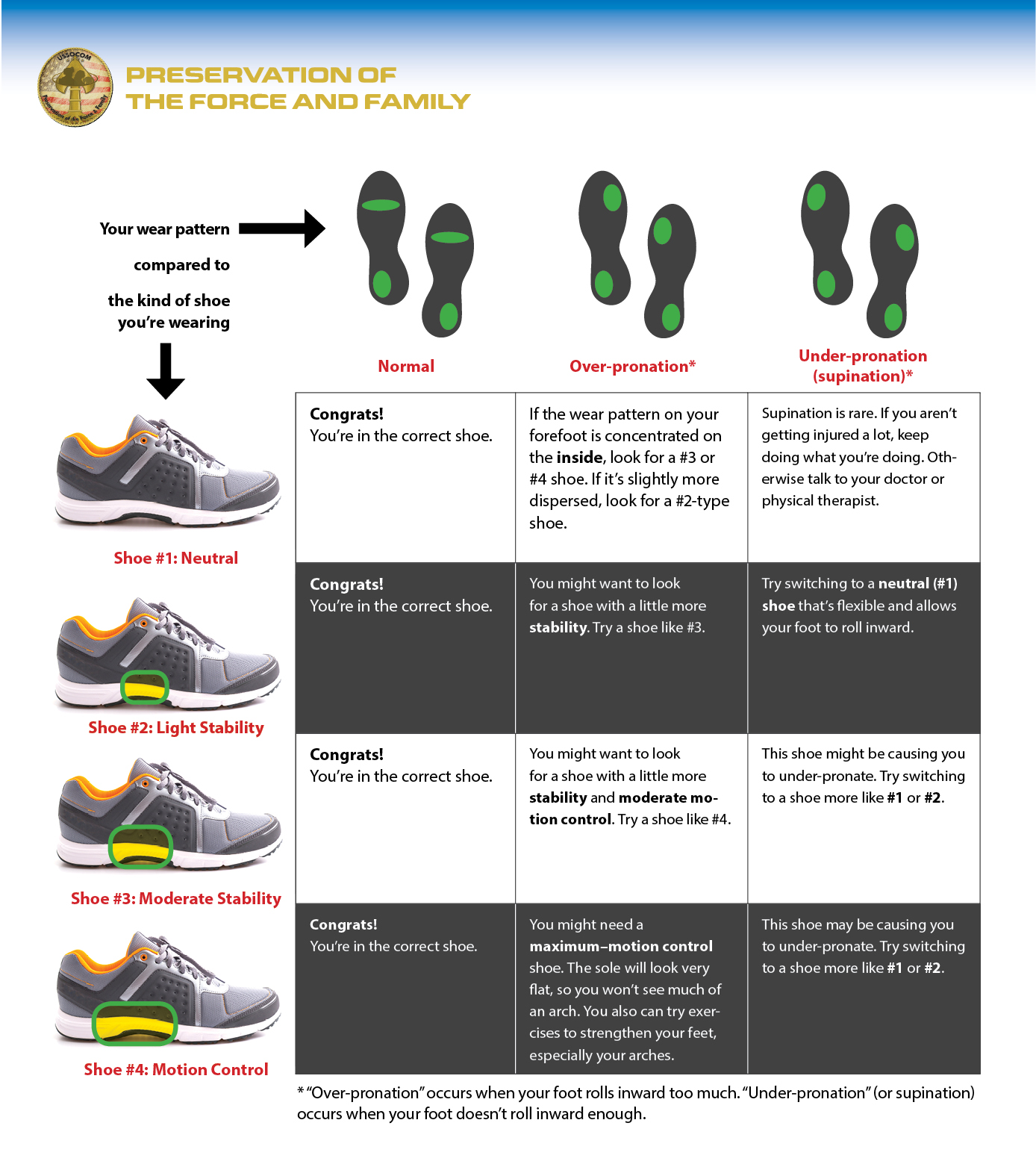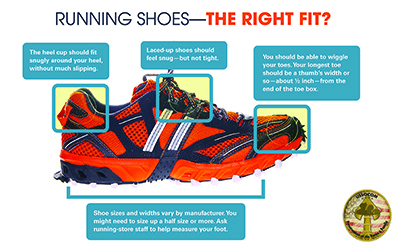Running shoes that fit
Wearing the correct shoe for your running style may help prevent running injuries.
By:
Body - Physical Training
-
7/6/2017
-
Page Image 1
-
Page Image 2
-
Slider Image
Page Content
Although there are many factors that affect injury risk, wearing the correct shoe for your running style might help prevent running injuries. But with all the different kinds of running shoes out there, it can be hard to know which shoe is right for you.
The U.S. military used to recommend buying shoes simply based on your arch height: flat, normal, or high. And some military exchanges still use the arch-height system to categorize their shoes. Arch height can influence your foot strike, but it doesn't always accurately reflect your overall running style.
First, look for a specialty running store. Their staff members are usually a bit more knowledgeable about the various running shoes and can help you find what's right for you. However, there are other ways to figure out what kind of runner you are and which types of shoes are best. (Note: This article only refers to running shoes, as wear patterns and fit will differ for walking and other types of shoes.)
The Right Shoe
Start by looking at the wear pattern of your most recent pair of old running shoes. This might be the pair you're getting ready to replace, but if those shoes are too new, it might be difficult to see wear patterns. Use the chart below to compare common wear patterns to the wear pattern on the soles of your current or old running shoe. Then look at the inner side of your shoes (the sides facing each other). Motion-control and stability shoes typically have gray (or different-colored) foam near the midsole to heel: The foam should feel harder than what is on the outsole. Shoes with harder foam covering a larger area—highlighted in yellow on the chart below—provide more stability and/or motion control.
One Important Thing To Note
If you're already wearing shoes that have been fitted for your running style—and you're not experiencing any serious injuries—then keep running! "If it ain't broke, don't fix it."
The Right Fit
Now that you've figured out what kind of running shoe you need, you can focus on making sure your new running shoes fit properly. Before you head out to the store remember these tips:
Bring or wear a pair of good socks, preferably the kind you run in.
Bring any insoles or orthotics you usually wear during runs.
Replace the insoles from your new shoes with your own orthotics or insoles to ensure a comfortable fit.
Shop later in the day—when your feet are flattened and more swollen—to get an accurate measurement.
Make sure to try them before you buy! Check out these helpful hints on heel cup, snug fit, and wiggle room.

Lacing Up
There are lots of different ways to lace up your shoes to round off that perfect fit. Because, let's face it, sometimes the traditional way just doesn't cut it. Is your heel slipping? Do you have a hot spot? Are your toenails turning black? Check out the videos below for shoelace-tying fixes to three common foot problems.

Heel Lock
Those extra eyelets at the top of your shoes are actually useful. Use the heel-lock method of lacing to secure your foot without having to tighten the rest of your shoelaces.
Black Toenails
You can tie your shoelaces to help pull the shoe away from your toes, giving them more wiggle room. Note: The lace ends don't have to be even when you start lacing your shoes. The diagonal lace can be a little shorter to start with, but leave enough so you can finish tying your shoes.
Hot Spots And High Arches
If you have high arches or a "hot spot" on the top of your foot, try lacing around these painful areas—not over them—by moving the laces up or down, depending on where the irritation is located.
Final Tip
Wear your running shoes for running only! Wearing them for other activities can change the wear patterns and cause them to wear out faster.
Running shoes that fit.aspx
Related Articles

